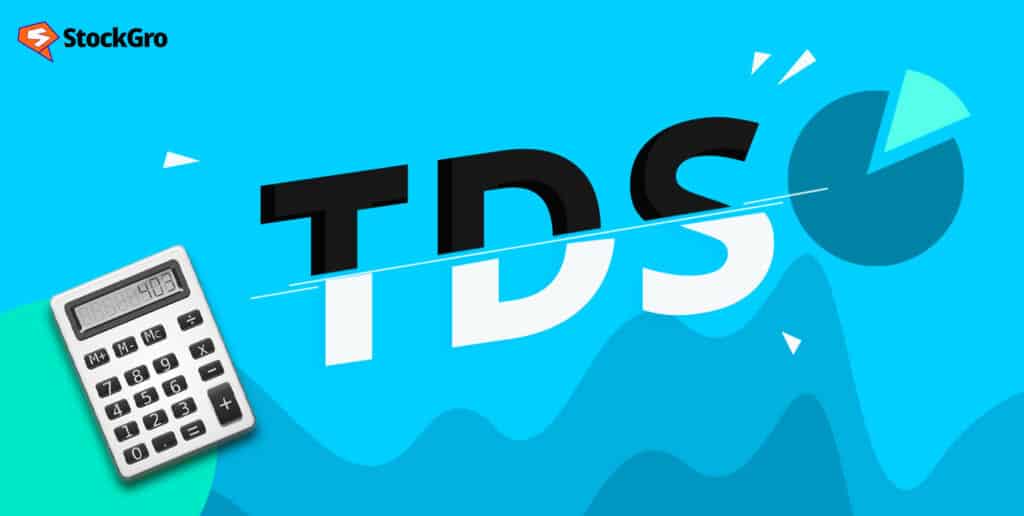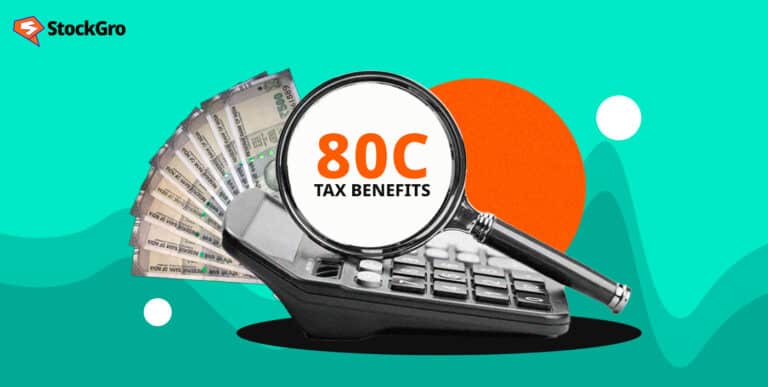
There are several ways an individual earns money. Depending on the income tax bracket their taxable income is, they must pay income tax, which is a direct tax.
This direct tax, as per the Indian tax system, is the Tax Deducted at Source (TDS) and has a considerable impact on taxpayers’ after-tax income. For a salaried and business-oriented professional, it is important to learn what TDS is and why it is deducted from the salary.
What is TDS?
The TDS means “Tax Deducted at Source” and is governed by The Income Tax Department of India, which has established a method to collect taxes directly from the source of income.
According to the TDS method, a specific amount of tax is withheld by the payer (deductor) at the time of payment from the payment made to the recipient (deductee). Then, on behalf of the deductee, the amount of the deducted tax is paid to the government.
Rules under TDS are set per The Income Tax Act of 1961 and by the Central Board of Direct Taxes (CBDT). The main motto of implementing TDS deduction is to check on tax evasion by a taxpayer. Moreover, the taxpayer does not need to pay a lump sum as an annual tax during the tax payment.
You may also like: Understanding GST: The tax superhero of India
Here is an example of how TDS is deducted.
Suppose an employer pays a salary of Rs 60,000 to his employee. The employer shall deduct 10% from the salary per the Income Tax rules. Here is the calculation of the TDS deduction:
Salary: Rs 60,000 per month
Tax rate: 10%
TDS= Rs 60,000* 10%= Rs 6,000
The employer will remit the deducted amount to the government. In this case, the employer also must issue a TDS certificate, Form 16, containing all details about the TDS deduction.
What are the objectives of tax deducted at source?
The primary objective of implementing TDS is to have a smooth and regular flow of revenue to the government through taxes from different sources of income. Some other major objectives of TDS are-
- Timely Tax Collection– With TDS, the government can collect tax on time by deducting taxes from payments rather than depending exclusively on taxpayer compliance with tax laws when filing income tax returns.
- Widening of the Tax Base: Using the TDS method, the government can bring more taxpayers into the tax system because the payer is responsible for withholding tax regardless of whether the recipient is required to pay tax.
- Preventing Tax Evasion- TDS helps prevent tax evasion as the government ensures that all taxes are collected on time.
What are the latest updates on TDS as per the 2023 Union Budget?
In the Union Budget 2023, some changes were made in the TDS, which a taxpayer should be aware of. Here are some of the updates-
- Leave Encashment- For non-government employees, the exemption level for leave encashment has been raised from Rs 3 lakh to Rs 25 lakh. As a result, under Section 10(10AA), leave encashment up to a maximum of 25 lakhs for 10 months is tax-free at the time of retirement.
- TDS on EPF Withdrawal: The TDS for taxable PF withdrawal has been reduced to 20% from 30%.
- No Penalty: Under Section 269SS or 269ST, no penalty would apply when a primary agricultural credit society, a primary co-operative agricultural and rural development bank, repaid a loan to its members, or vice versa.
- Limit on Capital Gains Exemption: Sections 54 to 54F capital gains tax exemption is capped at Rs. 10 crores. There was no threshold earlier.
- Online gaming: A 30% tax will be applied to net earnings. TDS on such net gains will be deducted starting on July 1, 2023.
Also Read: What do the GST council’s decisions mean for your wallet?
Why is TDS deducted from salary?
If you are wondering why TDS is deducted from your salary, there is something you should know. Employers, irrespective of the company’s size, deduct tax from the salary and remit it to the government on your behalf.
Section 192 of the Income Tax Act 1961 covers the TDS on salary. Employers running a trust, partnership firm, co-operative societies, individuals, and HUF should deduct 10% of the total salary of employees.
How to apply for the TDS refund?
One common misunderstanding is that an excess TDS refund differs from an income tax refund. But when you submit your yearly income tax return, you can claim only one kind of return under the Indian Tax System.
To claim your TDS tax, you must provide bank account information, including the account number and IFSC code. You won’t receive a legitimate file if you don’t do this. If someone deducts more tax than they should have, they may be eligible for an income tax refund when they file their yearly income tax return (ITR).
Here is how you can apply for the TDS refund-
- Register with the IT department on its website to file your TDS online.
- Once registered, you can file your income tax return by downloading the relevant ITR form.
- Fill in the details, upload the Form and click on submit.
- You must e-verify the ITR acknowledgement once the ITR is filed. E-verification is possible using a digital signature, an OTP based on your Aadhaar, or a net banking account.
- However, you can complete the verification by providing a signed physical copy of the ITR to the IT department if you cannot e-verify it.
- To check the status of your TDS refund, use your PAN card on the Income Tax website.
Also Read: Gold vs Equities- Which is the right investment option?
Final Words
Whether you are a salaried person or an entrepreneur, you must keep updated with the changes in the TDS structure, ensuring you face any action from the tax department.

